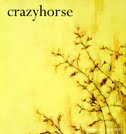In these oh-so-unsettled times, I like to have something I can rely on. New England Review never lets me down. I know the quality of the writing will always be strong, serious, sophisticated, and that there will always be something unexpected, fresh without trying to impress. This issue lives up to the task – a good portion of the issue is devoted to an essay by the late critic and editor Ted Solotaroff (1928-2008), along with brief reflections of Solotaroff by more than a dozen and a half writers, editors, and literary colleagues. These remembrances are preceded by a long excerpt from Solotaroff’s, “The Literary Scene Changes,” an unfinished, unpublished memoir (his third). I enjoyed very much these personal recollections from Philip Roth, Lynne Sharon Schwartz, Robert Stone, Robert Cohen, Hilma Wolitzer, Gerald Stern, Bobbie Ann Mason, Georges Borchardt, Gerald Howard, James Lasdun, Jill Schoolman, Russell Banks, Anton Shammas, Hy Enzer, Irene Skolnick, Douglas Unger, Allegra Goodman, Ehud Havazelet, and Max Apple. The diversity of ages, genres, and types of relationships to Solotaroff makes this little collection of tributes all the more appealing. Continue reading “New England Review – 2009”

